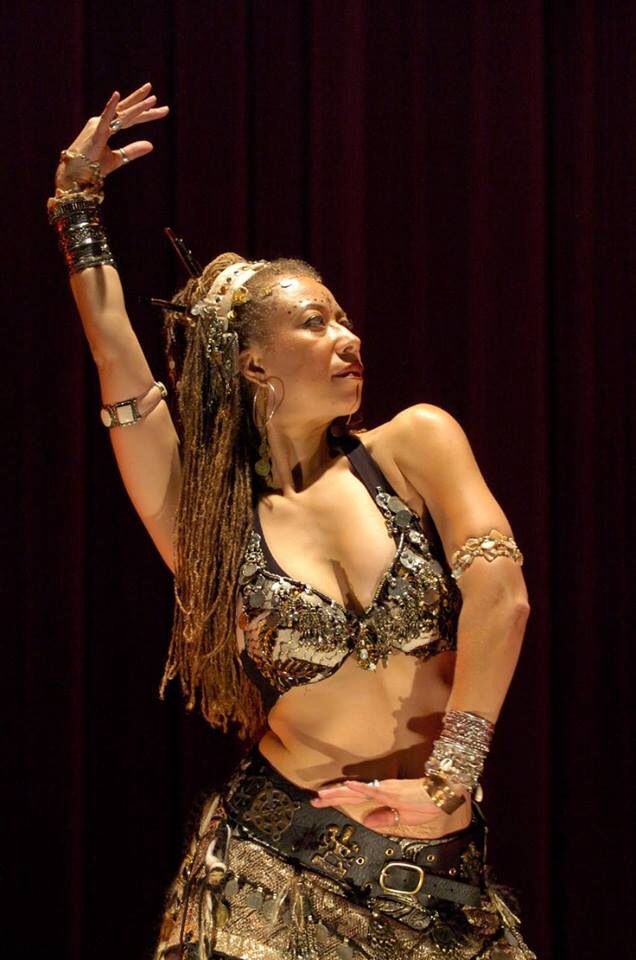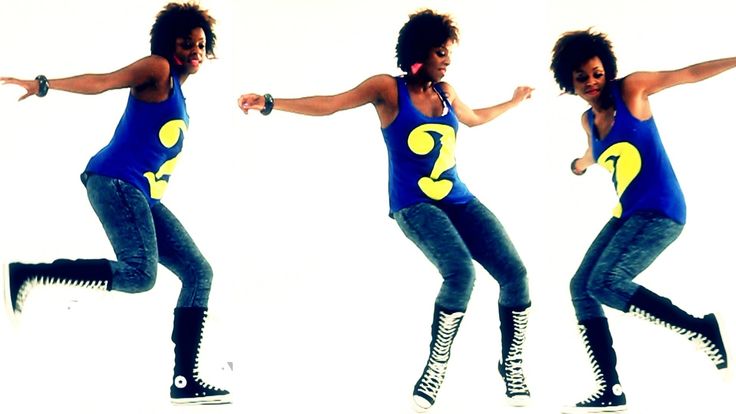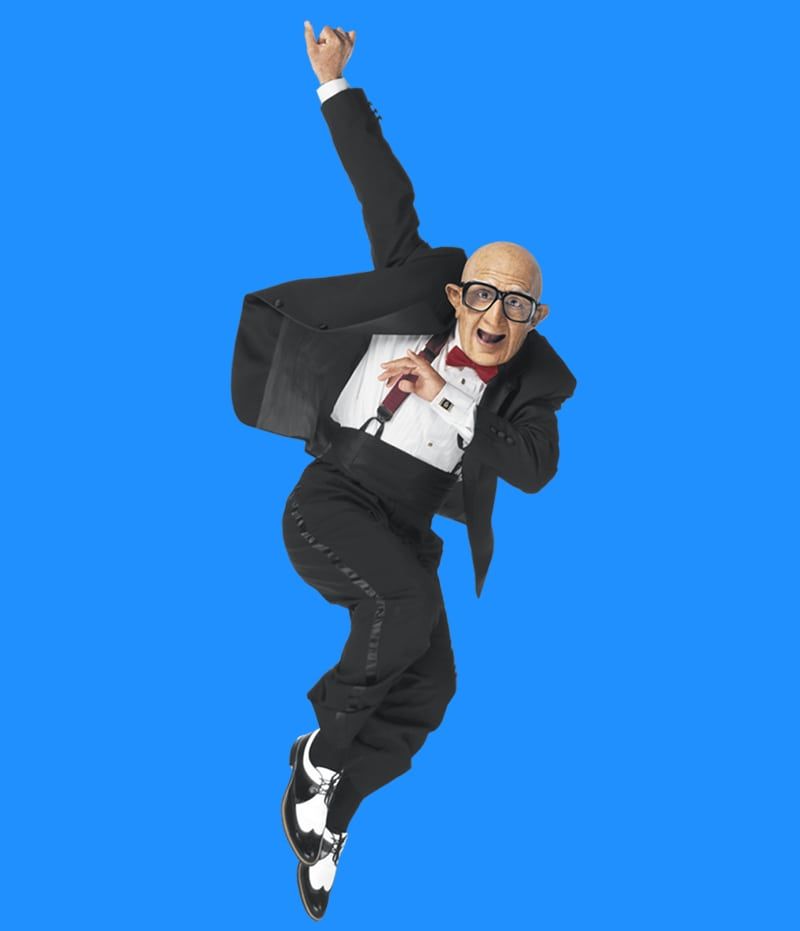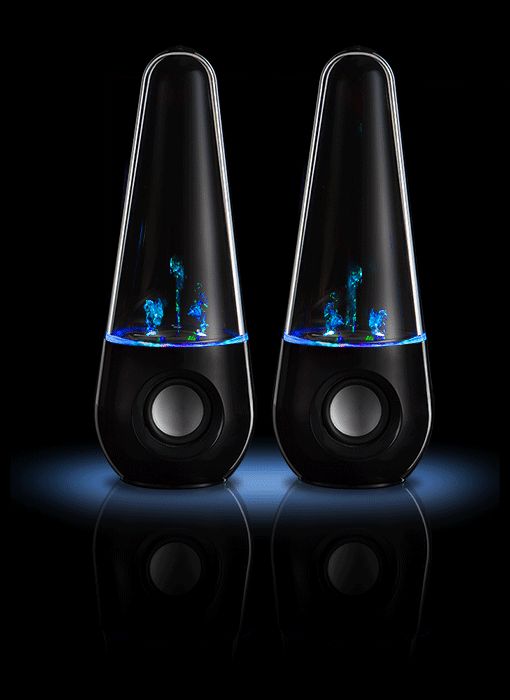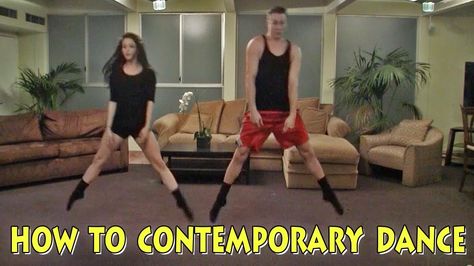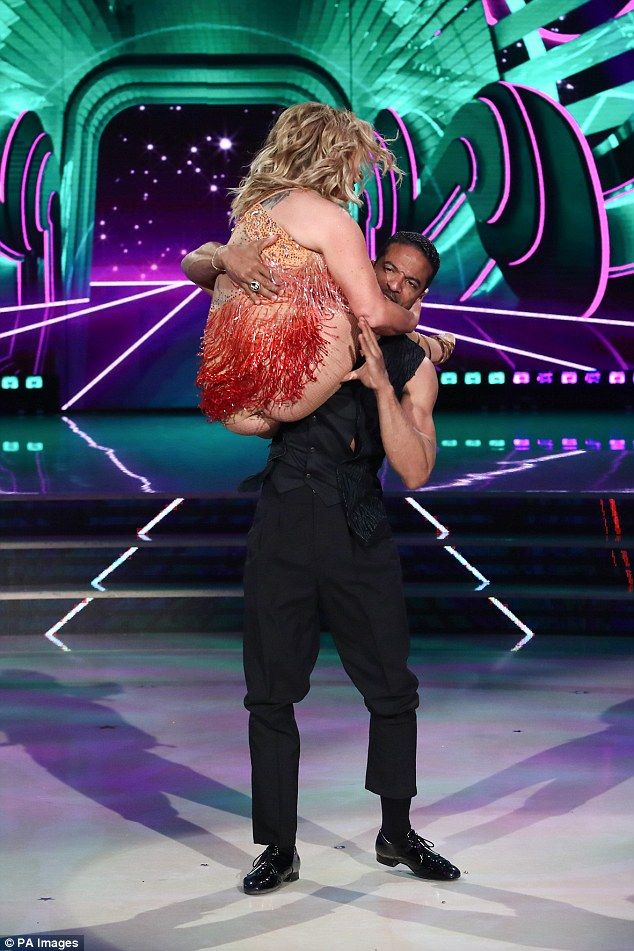How to break in irish dance hard shoes
Are you breaking in your hard shoes the right way?
Whether it’s your very first pair, or you go through six pairs a year, breaking in hard shoes is never fun. Beginners right through to World Champions all have war stories of blisters, bleeding, and general frustration at getting the leather to bend and soften in just the right way. There are secret hints and tips shared amongst dancers, shortcuts to getting shoes broken in – some work and some do not. We spoke to Adrian Gavigan, shoe expert at Antonio Pacelli, to debunk some of the most common methods.
Myth: Folding the shoe in half and placing it under a mattress or couch cushion will bend it the right way
Fact: Hello, taco toes*. According to Gavigan, “folding them and putting them under the mattress can destroy any support and creates a weak point in the sole. This can cause dancers to roll over the shoe when doing toe stands.” Better to manipulate the shoes with your hands so you can see that it is bending in the right spot.
Myth: Standing in hot water will soften the leather
Fact: It will actually destroy your shoes. Gavigan says, “this is a terrible idea and can affect the stitching and glue used to adhere the sole to the upper, as well as drying out the leather. It also invalidates any warranty on their shoes.” Best not to try that one!
Myth: Using a leather softener like Hot Glove (used on baseball mitts) will speed up the process
Fact: Be careful what you use. This is a tricky one, and not something Gavigan advises. “We have heard of dancers using products designed for other uses, but again, this can damage the leather and make the shoe non returnable in the event of a fault.” Some leather softeners, like Hot Glove, require putting your leather product in the oven – we definitely don’t recommend putting your hard shoes in the oven!
So after this list of don’ts, what are Gavigan’s do’s? “The best advice I can give is to wear them around the house with a comfy pair of socks to start the process of moulding the shoes to your feet.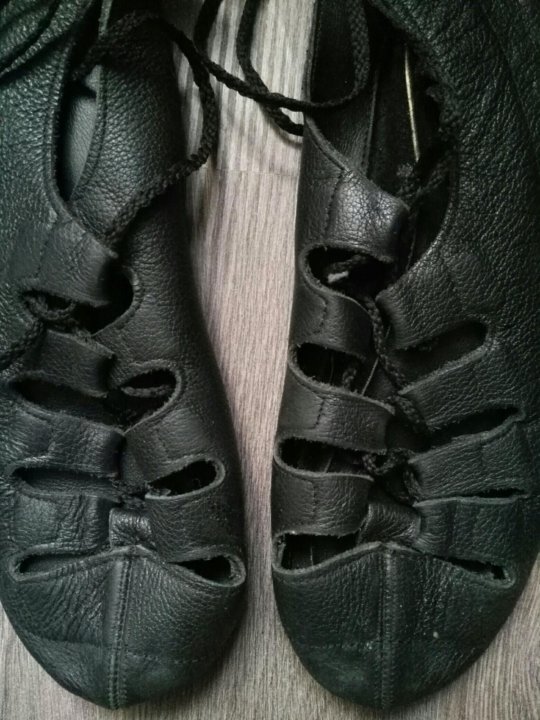 ” Unfortunately there are no quick fixes, and you don’t want to risk damaging your shoes trying to rush the break in process (they are expensive, after all!)
” Unfortunately there are no quick fixes, and you don’t want to risk damaging your shoes trying to rush the break in process (they are expensive, after all!)
But what if you really struggle to break shoes in? “If a dancer has real trouble breaking in hard shoes then there are models out on the market such as our Ultralite jig shoe which are designed for no break in time and are made from soft leather and have soft flexible soles.” says Gavigan. He goes on to add, “However, dancers need to remember that these shoes are for experienced dancers only. These type of shoes require a dancer to have strong arches as the shoe relies on the dancers foot for structure. If you want a good middle group then the Ultraflexi jig shoe is a good balance of easy break in and support.”
How do you break in your hard shoes?
*taco toes – when your shoe/foot bends so far over that it creates an unnatural curve, much like a taco shell. This is not a good thing! Your foot should be straight when doing toe stands – taco toes lead to serious injuries.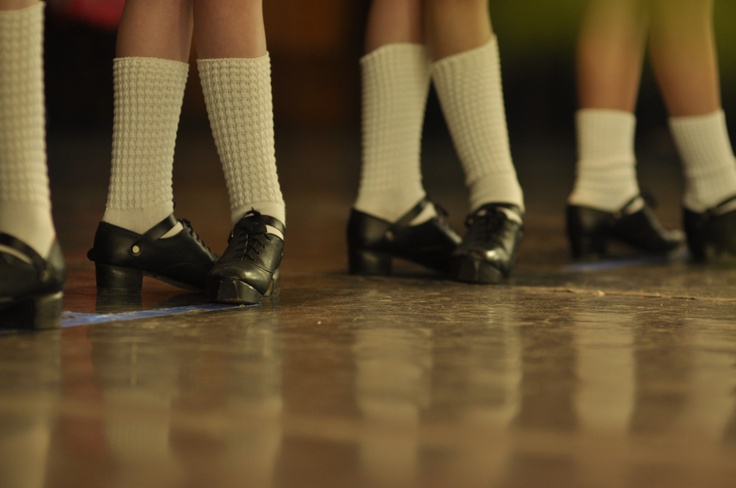
Irish Dance Shoes: Out With The Old But How To Break In The New?
Breaking up with your Irish dancing heavy shoes is hard to do! You are SO comfortable together now, so used to one another that you don’t even mind the worn leather, split seams and worn-out tips. Whether you’ve stretched your well-loved jig shoes for one or two or even three years now, it’s time. New laces or new tips just won’t do. No amount of gaffers tape will hold the two of you together for another competition. Your growing feet, your pinched toes, your hornpipe NEEDS new hard shoes!
photo courtesy Montague Irish Dance
Feis America on Irish Central reached out to our FaceBook friends who've ‘been there, done that’. From adjudicators and teachers to World Champions and trainers, we've got a plethora of suggestions for breaking UP with the old shoes and breaking IN those perfect, shiny, rock-hard new ones. Here's what they have to say:
"Practice, practice, practice! When I get new shoes, I don't put the old ones back on!" - Drew Lovejoy, Open Champion under 16 from McGing (Ohio), World Irish Dancing Champion, All Ireland Irish Dancing Champion and North American Irish Dancing Champion
“Wear the shoes around the house before dancing in them or try sleeping in them so they mold to your feet. Also bending the shoes help so they get an arch. Then start practicing in them!” - Mairead Early, McLoughlin School of Irish Dance (New York/New Jersey)
Also bending the shoes help so they get an arch. Then start practicing in them!” - Mairead Early, McLoughlin School of Irish Dance (New York/New Jersey)
“Wear heavy socks and wear [the shoes] around the house or have your Mommie wear them for a bit!” - Jackie Nonienwicz, Feis Mom at The Gray School of Irish Dance (Connecticut), jokes.
“Practice, practice, practice.”
- Sean Flynn, ADCRG
“Put them on your feet and stand in a pan of boiled water (only like 2 to 3 inches of boiled water, so it covers the sole of the shoe) for a few minutes, then try to do toe stands! I usually wear socks, it stretches the leather and kind of molds them to your feet. ”
- Josie Callanan, Broesler School of Irish Dance (Maryland/New Jersey/New York)
“Stand in a tub of hot water until they are nice and wet. Time is the best way to break them in though. ”- Michael Boyle, TCRG, Boyle (Massachusetts)
”- Michael Boyle, TCRG, Boyle (Massachusetts)
“ I bend them in half both ways and electric tape them overnight for 3 weeks! It’s hard to explain but fold them just below the tip one night, where my arch would be another night and close to my heel another, then alternate every night! But, just this past week at the All Scotlands, John Carey said to my mom, ‘soak them in water with your feet in them and sleep in them! “- Rose White, Rince na Tiarna (New York)
“Fold them in so the toe touches the bottom by the heel, then put a big rubber band around them to hold them that way overnight.” - Barry Parsons, Middle America Region Feis Dad (Missouri)
========================================
READ MORE TIPS ON IRISH DANCING HERE:
Even Monsters Can Irish Step Dance!
Safe Sports Drinks for Irish Dancers
Planning for Success in Irish Dance
========================================
“I just broke in new shoes for All Scotlands! I bend my shoes a lot, and press down on the heels to prevent blisters. Also, you can wear your dance shoes around the house just to get a better feel of them. Every time you walk or dance in your hard shoes, you should feel as if you were in runners [a.k.a. sneakers or trainers].” - Fred Nguyen, De Danaan (Western Canada)
Also, you can wear your dance shoes around the house just to get a better feel of them. Every time you walk or dance in your hard shoes, you should feel as if you were in runners [a.k.a. sneakers or trainers].” - Fred Nguyen, De Danaan (Western Canada)
“Wear them all day long -- to sleep if you must! I've heard of people putting bags of water in the shoes, then freezing them but I'd rather have the shoe expand with my foot, not a bag of water…" - S.J. Velasquez, Irish dancer and Feis America on Irish Central blogger (RincePop!)
“Practice!” - Julie Ann Showalter, ADCRG, World Academy (Indiana)
“Put boiling water in them for a minute, pour the water out, and then immediately put your feet in the shoes… the leather gets bendable and stretchable!” - Tyler Schwartz, World Champion, Trinity Academy of Irish Dance (Illinois)
“Put them in boiling hot water and a little oil for an hour then put straight on your feet and dance in them. NO blisters !” - Mitchell Hodges, Broesler (Maryland/New Jersey/New York)
NO blisters !” - Mitchell Hodges, Broesler (Maryland/New Jersey/New York)
“Treat them with a baseball-glove softener like Hot Glove and warm them in the oven for 4 minutes.”- Bill Bennett, Bennett School of Irish Dance (Colorado)
“Funny story about breaking in hard shoes with the Hot Glove-and-bake treatment. Once upon a time, a shoe company in Arkansas decided to make the only US-made hard shoes I'm aware of, Kelleys. One of our dancers bought a pair and subjected them to the Hot Glove-and-bake treatment. Turned out the adhesive for the toe puffs had a lower melting point than the oven temperature. I phoned the company to tell them. The very polite Arkansas lady at the other end of the line took a moment and then asked, "Why would you put your shoes in an oven?"
“Dance in them and wear them outside on the pavement.” - Michela Summa, Bremer School (Massachusetts)
“To be able to go up on the toes you need to check how flexible the arch is.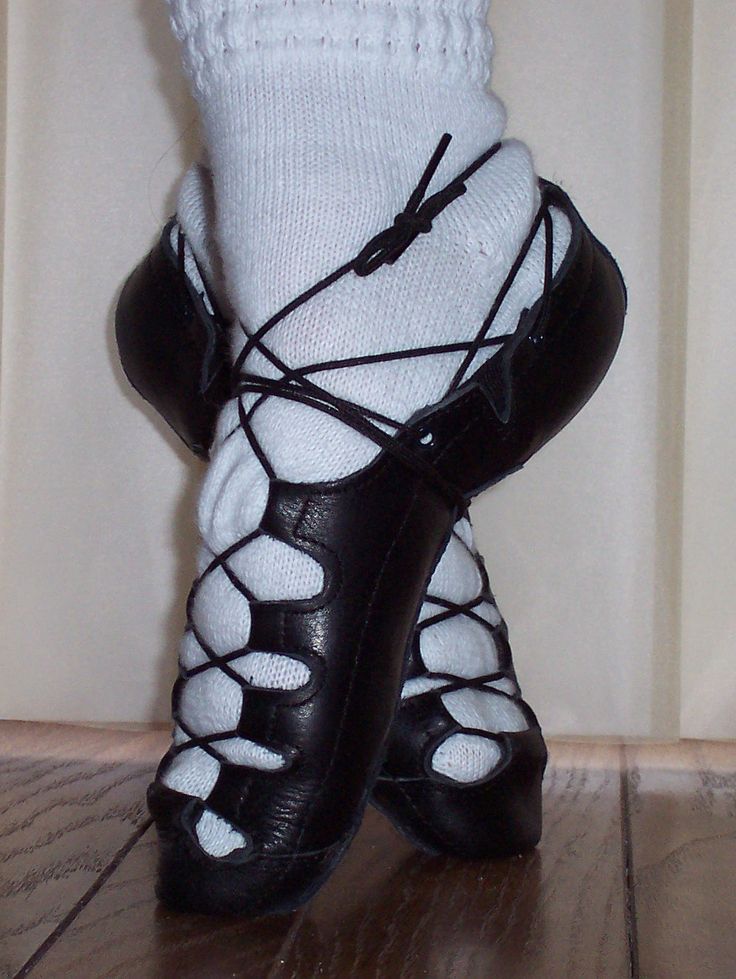 .. If it is not flexible enough you need to stretch the leather on both sides of the laces. Wearing the hard shoes and extending your feet to keep toes straight will do that . To soften the heel, heat the back of the shoe above the heel. Rubbing both sides of it will do this. Also, sitting the shoes in front of the fire will help. Make sure the dancer is wearing the shoes when heating the heel and front as the shoe will then mold around the foot. You don’t need to keep the heat on too long as the leather will become too loose.” - Stephen Pepper, Irish Dancing Core Strength & Conditioning
.. If it is not flexible enough you need to stretch the leather on both sides of the laces. Wearing the hard shoes and extending your feet to keep toes straight will do that . To soften the heel, heat the back of the shoe above the heel. Rubbing both sides of it will do this. Also, sitting the shoes in front of the fire will help. Make sure the dancer is wearing the shoes when heating the heel and front as the shoe will then mold around the foot. You don’t need to keep the heat on too long as the leather will become too loose.” - Stephen Pepper, Irish Dancing Core Strength & Conditioning
"Steam them near the shower (NOT in the shower) and put them on while still warm and damp, and leave on 'til they dry! Also, try Hot Glove treatment found at sporting goods stores. It's made for baseball gloves but works on hard shoes too!" - Theresa Shaffer Wilkinson, TCRG, Dunleavy-Shaffer School (Massachusetts)
There are bound to be some blisters, so avoid some of the tears and take this advice from someone who has had more than her share, Open Champion Mairead Early of the McLoughlin School of Irish Dance: "Try wrapping your toes with pre-wrap and medical tape, and use baby powder on your feet to avoid moisture.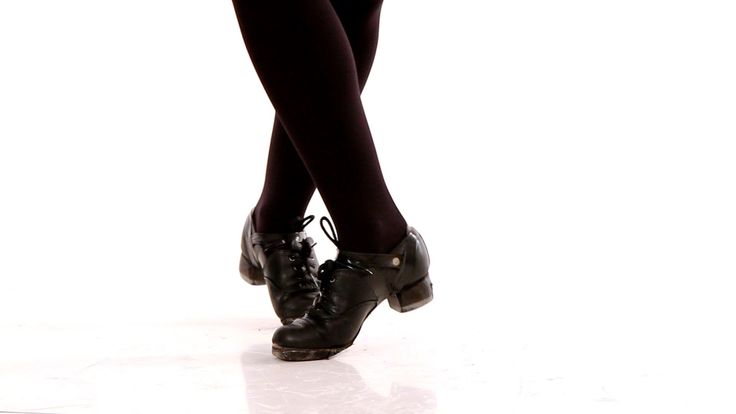 Keep Band-Aids on hand!"
Keep Band-Aids on hand!"
How do YOU break in new shoes? What do you do with the old ones? Does your school resell used shoes? Is one brand easier to break in than another? Comment please!
Note: These personal experiences and suggestions are listed for informational purposes only. Be sure to take care of your shoes as recommended by the shoe manufacturer and always defer to your teacher’s directions. Feis America on Irish Central makes no representations as to the appropriateness, safety or compliance of the information conveyed here. Good luck!
For fabulous Irish dancing event coverage, photos, articles, fiction and more, subscribe to Feis America, North America's favorite Irish dancing magazine! Back issues available NOW available in digital format!
Soft Irish Dance Shoes. Troubleshooting: killarney_ru — LiveJournal
Do you make similar mistakes with your Soft Irish Dance Shoes? When it comes to shoes for Irish dances, the most problems and difficulties are caused by breaking in jig shoes - water corns, corns, dry corns.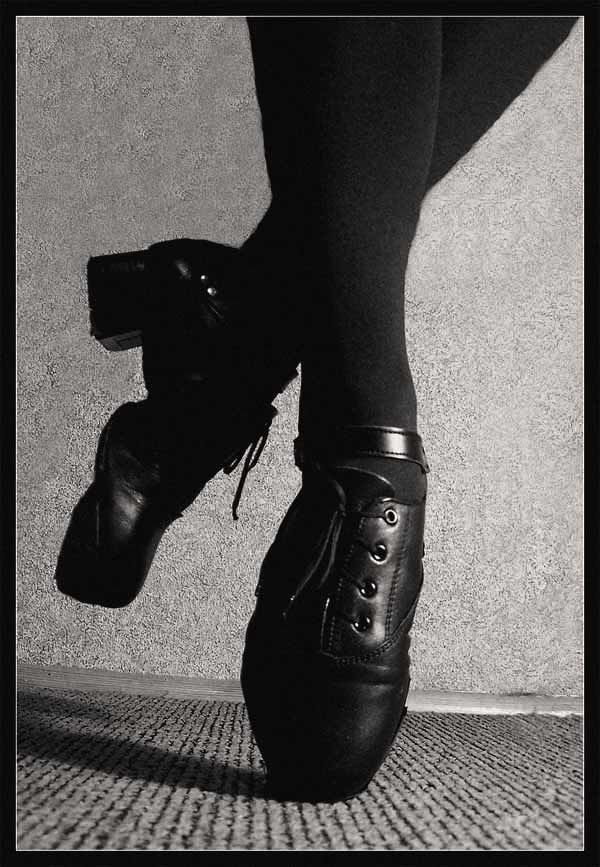 It's easy to forget that soft shoes can also be tricky. Pamela McDowell, general manager of Ryan & O'Donnell answers the most frequently asked questions about soft shoes, gives tips on how to break them in, choose the right size and make sure that shoes last a long time.
It's easy to forget that soft shoes can also be tricky. Pamela McDowell, general manager of Ryan & O'Donnell answers the most frequently asked questions about soft shoes, gives tips on how to break them in, choose the right size and make sure that shoes last a long time.
What should I pay attention to?
Although soft shoes look quite simple (a piece of leather with lacing), they can vary significantly depending on the manufacturer. According to Pamela: “Cushioned shoes do not have strong foot support due to the basic design properties and their purpose, however, you have to pay attention to how the manufacturer compensates for this. For example, good arch support, cushioning, and a slightly stiffer sole can give you better support and protection when you move on your toes.”
Pamela believes that “when trying on soft shoes should sit tight and press a little, but so that you can walk and dance in them painlessly, experiencing slight discomfort only during the first lessons in them - then it will not take much time to adjust soft shoes to size , and by dancing in them, you will only slightly stretch them.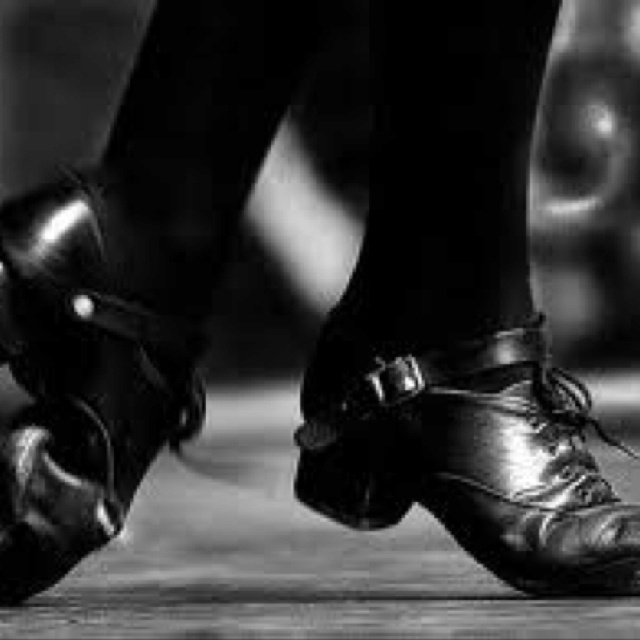 True to size is key, especially in the heel. “Soft should fit snugly around the heels and not slip off. The last thing you want is to lose them during the competition! If you see that the soft heels are loose, try on a pair a size larger, it is possible that the shoes do not sit on the heels correctly due to being too small. ”
True to size is key, especially in the heel. “Soft should fit snugly around the heels and not slip off. The last thing you want is to lose them during the competition! If you see that the soft heels are loose, try on a pair a size larger, it is possible that the shoes do not sit on the heels correctly due to being too small. ”
Should they push?
No. They should fit snugly and hold the foot well, but you should not feel pain. “If soft shoes don’t hold your foot, cause pain, or you can’t walk in them, then either the shape or size is wrong.” Pamela believes that it is equally important to tie the laces correctly during the fitting: “When trying on soft shoes, be sure to tighten the lacing to the end to see how they sit and look fully worn on the leg, if necessary, contact the sales assistant. There are several different ways of lacing laces that all dancers should know. If you tie your laces incorrectly, it will affect how you dance, so we advise you to ask your retailer for the recommended lacing method for each individual soft shoe model.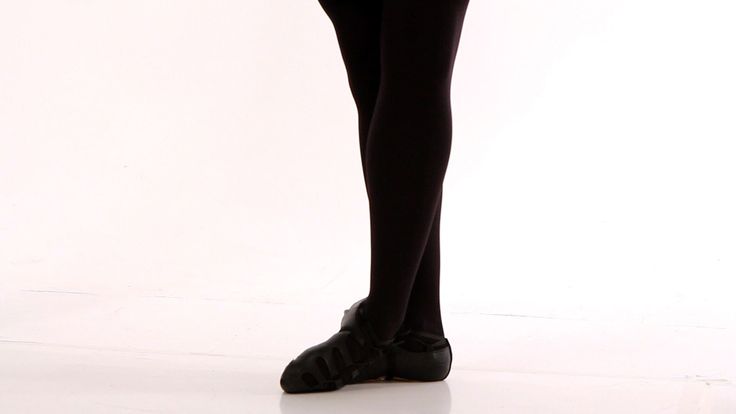 Don't be afraid to experiment with new lacing techniques in training, just because you're shown one option doesn't mean another won't work or be better for your feet."
Don't be afraid to experiment with new lacing techniques in training, just because you're shown one option doesn't mean another won't work or be better for your feet."
There has been a lot of debate about lacing for a long time whether it is better to tie around the foot or around the calf. Pamela McDowell says that "Ryan and O'Donnell don't recommend tying laces around the instep as it's not good for the foot and often causes cramps in the instep due to tendon compression." She also adds that “there is a recommended lacing technique that keeps shoes securely on the heels and does not require lacing at the instep. If you really prefer to tie your laces around the instep, we advise you to do this only in competition and avoid this method during training.”
How to break in?
According to McDowell: “Cushioned shoes shouldn't break in too long, especially if you buy the right size. The best way to break in any shoe is to simply wear it for training and change it in the middle of a session – pretty soon you will be in favor of new soft ones when you feel they have better grip and your dancing reflects that. ” She adds that “it might also be a good idea to try new soft houses on carpet first before dancing in them; this will give you an opportunity to make sure that they fit correctly and that you have chosen the right size / shape. If the shoes do not fit, then there will be an opportunity to change them, since they were worn for a short time and walked on the carpet.” Another important tip from Pamela, “You can also warm up the skin with your hands on the way to class and lightly wrinkle the shoes for 10-15 minutes before putting them on for the first time. This will help make the skin a little more supple when you put on your shoes in the gym.”
” She adds that “it might also be a good idea to try new soft houses on carpet first before dancing in them; this will give you an opportunity to make sure that they fit correctly and that you have chosen the right size / shape. If the shoes do not fit, then there will be an opportunity to change them, since they were worn for a short time and walked on the carpet.” Another important tip from Pamela, “You can also warm up the skin with your hands on the way to class and lightly wrinkle the shoes for 10-15 minutes before putting them on for the first time. This will help make the skin a little more supple when you put on your shoes in the gym.”
How do you keep them in good condition?
Cushioned shoes often feel stretched and worn, probably because you buy them too small. Often this is the case. Pamela suggests: “Try buying soft shoes that aren't too small - while you want a snug fit, it's not necessary to go a few sizes too small for fear of stretching.
Cushioned shoes are essentially bags of leather that will naturally stretch over your foot, however if you squeeze your foot into shoes that are two sizes too small not only are you hurting your foot but also your foot. immediately begins to stretch the skin as soon as you put on shoes. Therefore, we recommend that you buy soft shoes that are tight so that they are squeezing when you first put them on, as during exercise you will eventually stretch them and they will take the shape of your foot. If you buy soft ones that are too small, you stretch them very quickly and they begin to hang on you almost immediately.”
immediately begins to stretch the skin as soon as you put on shoes. Therefore, we recommend that you buy soft shoes that are tight so that they are squeezing when you first put them on, as during exercise you will eventually stretch them and they will take the shape of your foot. If you buy soft ones that are too small, you stretch them very quickly and they begin to hang on you almost immediately.”
Sizing can be confusing, especially when trying to match dance shoe sizes to casual street shoes. “Ryan and O’Donnell make soft shoes run small already with the above in mind, so we recommend you buy your actual size or half a size down for a very snug fit.”
Not only do you need to buy soft shoes of the correct size so that they do not stretch too much, but also to monitor their condition. “In order for soft shoes to keep their shape, you need to regularly put a clean sock in the toe area to absorb moisture and maintain shape. It's important to air out your shoes after a workout, otherwise the moisture from your sweaty feet will erode your skin and make your shoes smell bad. We also recommend using wax as often as possible on the seams on the soles to prolong their life and avoid wear and tear,” explains Pamela McDowell.
We also recommend using wax as often as possible on the seams on the soles to prolong their life and avoid wear and tear,” explains Pamela McDowell.
How often do I need to buy new soft ones?
There are many factors that determine how often soft shoes should be purchased, such as: training and competition schedule; the floor you are working on; and how “hard” you dance. McDowell says: “We recommend that open dancers change soft shoes every 3 months if they are training and performing in the same shoes. However, some open dancers buy shoes more frequently; many of those who compete in championships choose to buy soft shoes at major competitions in order to immediately enter new ones, because they feel more comfortable in them. For those who do not compete at the championship level, it may be advisable to change soft shoes every 4-6 months.”
How often do you buy new soft shoes? What manufacturer? What lacing method do you use? It's interesting, tell me?
Photo: Killarney IDS archive
Source: readytofeis.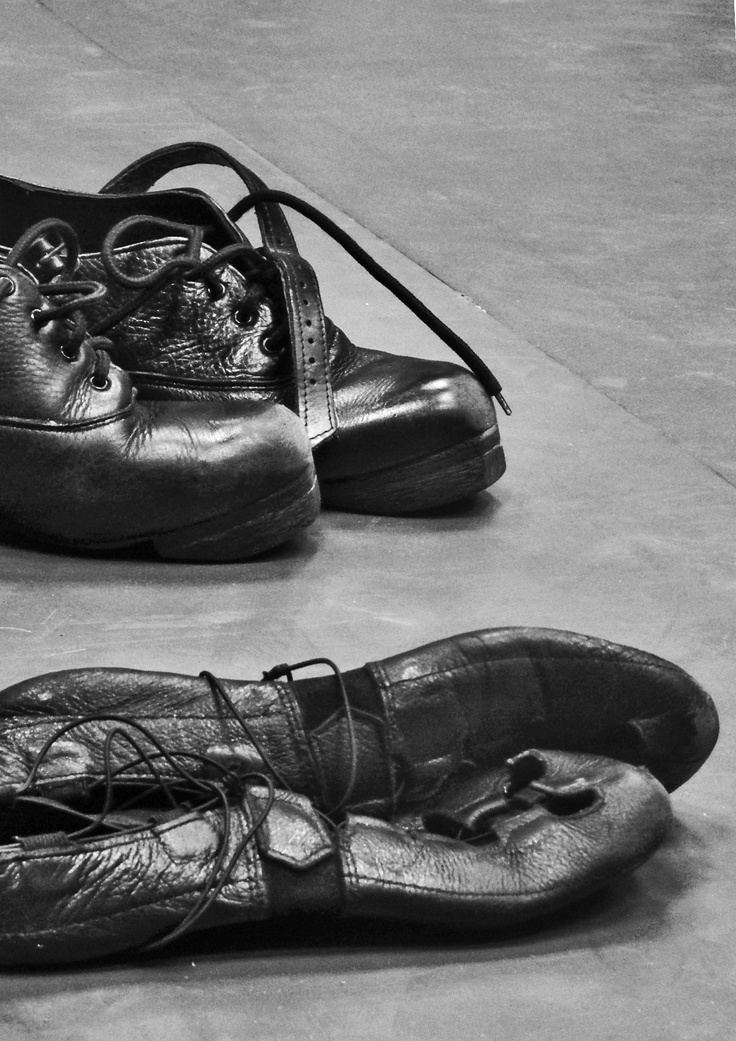 com, translated by O.Komyagina
com, translated by O.Komyagina
Comments and corrections by teachers Killarney IDS
If you want to use our translation, do not forget to indicate our source and author. Thank you. You are an iridancer if...
PS: the comments in brackets are mine and the translation is slightly free in places :))
1. You know that Irish dances and Riverdance are not the same thing, and are ready to kill the one who told you this that riverdance is Irish dancing in its purest form)
2. You know that jig shoes (aka hards) are not clogs (meaning wooden shoes - currently these are sandals with wooden soles and soft tops)
3. You know that what is on the dancer's head is a wig, not a poodle.
4. You know the difference between traditional step dancing and hard-shoe Irish dancing.
5. Every time you see "type-Irish dances", you begin to skew from one of their types, because their deployed knees, half-toes, position, hands .......
6. You try to keep your feet in the fifth inverted position when standing, sitting . . (hee hee .. I caught myself doing this more than once, especially when I stand at the stove, or near the sink :))))))
. (hee hee .. I caught myself doing this more than once, especially when I stand at the stove, or near the sink :))))))
7 Your calendar is marked from fashion to fashion, you have there is no money for a vacation, because you just bought a new dress, you have been to many cities in Europe, but more or less you know only the immediate surroundings of the places where the competitions were held.
8. You find it normal to wear white socks with black shoes
9. Your legs are a very serious weapon... (I mean, you can give such a high-quality kick :)) and it really is :))))
10. You risk wearing a huge wig and a tiara (crown) like a queen, you are crazy buying shoes that are significantly smaller than your usual size (it seems to be hardshoes), you do not go crazy with two hours of listening to the accordion, you do not pay attention to pain in the legs.
11. When you listen to a piece of music on 4/4 (regardless of direction), you automatically start pounding or jumping, or scrolling through your head a tap dance you know, or inventing your own.
12. You almost forgot what numbers come after "8", your conversations with friends go in the style: "and then yes-yes-yes, or yes-yes-thum-thum?"
13. You can't stop tapping your feet softly under the table, even if you're at a lecture or workplace.
14. Your study/work colleagues start to look askance at you when you are standing in a position that is comfortable for you (hands at the seams, back straight, legs in the fifth position turned out)
15. You forget how to walk normally (except for the promenade or skips), When you walk down the street, catch yourself with your hands pressed at the seams, at the bus stop you start to make various movements with your legs - however, this is a good way to warm up :)
16. When you are sad, you begin to remember steppes " on fingers"
17. You don't remember the last time you dated a non-dancer 5 years older than you.
18. Your jeans stick to your legs in the places where you glued your socks (true, socks don't stick, but pantyhose and everything else sticks well :).
19. You remember the names of all the world champions over the past 15 years, but you don’t know the name of the congressman from your state (apparently, this is greetings from the state iridancers)
20. In the cold, you start tapping the rhythm of the trebble jig with your teeth :)))
21. You wake up and find your own legs in the cross:)))
22. You are trying to roller skate with your arms at your sides.
23. You are trying to do pointe shoes in normal shoes.
24. The sole of your shoe is broken in characteristic places because of this.
25. Trying to dance Irish dances at an ordinary disco.
26. Constantly get into the reversible fifth position.
27. Tap the trebbles under the table and it's annoying to those around you.
28. Constantly talk about dancing and it annoys everyone.
29. Watch only Irish films.
30. You stop at a red traffic light and some idiot next to you turns on all the hip-hop, in response you lower the roof on your car (meaning a convertible), open the windows and turn on a Liam Brandley track or any other Irish music.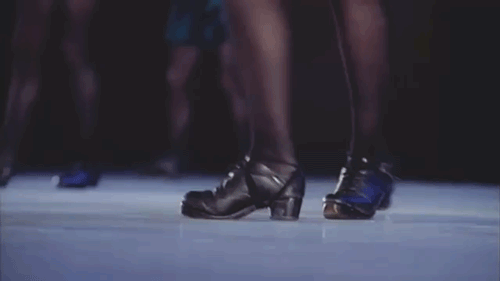
31. You practice jumping in a swimming pool (ahm, I'll have to try).
32. If someone says "bicycle" - you immediately start jumping and your legs make very funny movements.
33. You know how to pronounce "orechtas", "fash", "caylee" and many Irish names correctly.
34. You recognize people by their dresses and nicknames.
35. Your "non-iridancer" friends know what "orechtas" is and can pronounce the word correctly.
36. You think sock glue and a wig are normal things.
37. You are dancing in your sleep. (sometimes... sometimes...)
38. You don't see anything wrong with going down to the hotel for breakfast in a wig and make-up, however, other guests after that see you off with very surprised looks.
39. Your boyfriend, who has never been to a fashion or dance class, can discuss steps with you, and also knows and can explain what prime, intermed and open are.
40. If by the end of the fashion you are no longer able to get up, but, nevertheless, get up to finish the last dance.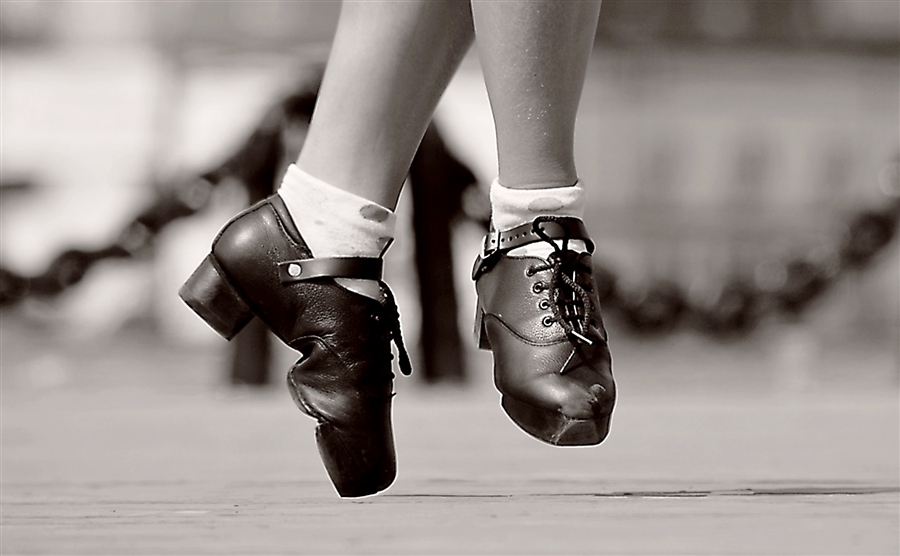
41. The day after the fash you move with great difficulty.
42. You will never hear from iridancers the question "Gene Battler - who is he?"
43. Your PE teacher constantly reminds you to work with your hands, and you look at him like he's crazy.
44. You get hysterical if you are unable to dance for a week due to injury or illness.
45. You have an Irish melody on your mobile phone (gee, the real truth)
46. Your hards squeeze your legs so that your eyes pop out on your forehead, but you continue to dance.
47. Your mom's friend knows how to put on a dance wig, even though she doesn't have any Irish dancing kids - because you once asked her to help out with fashion when your mom was sick.
48. Your friends keep asking you to dance as soon as Irish music starts.
49. You're walking up the stairs at school and you hear a guy say to his buddy "look at her legs!" and his friend asks you what sport you do, to which you answer that you do Irish dancing.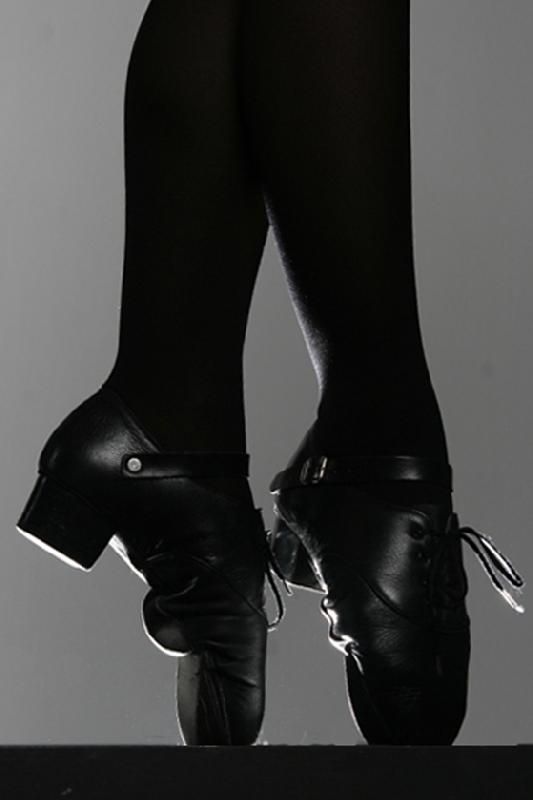 This turns into an interesting long conversation where you teach the two guys some simple steps and become good friends.
This turns into an interesting long conversation where you teach the two guys some simple steps and become good friends.
50. You keep replaying steps in your head.
51. You won't stop dancing even if the world ends.
52. But if you stop dancing, it will be the end of the world.
53. If someone asks you what you like to do most of all, then you automatically start dancing.
54. If a dance shop does not sell glue for socks, shorts, etc. - you write a long angry letter to them (for example, I would also write, otherwise they don’t sell anything here)
55. Your sister unsuccessfully asks her parents to buy her several pairs of new shoes and they say no, but you buy hards for the same price without any talk.
56. Your sister, who plays football, thinks she's cooler because it's a "real sport", but when she comes to a trial lesson in a dance class, she dies in half of the lesson and sits on a bench for the rest of the time. (hmmm, it seems that in the states soccer (English football) is a mass female sport)
57.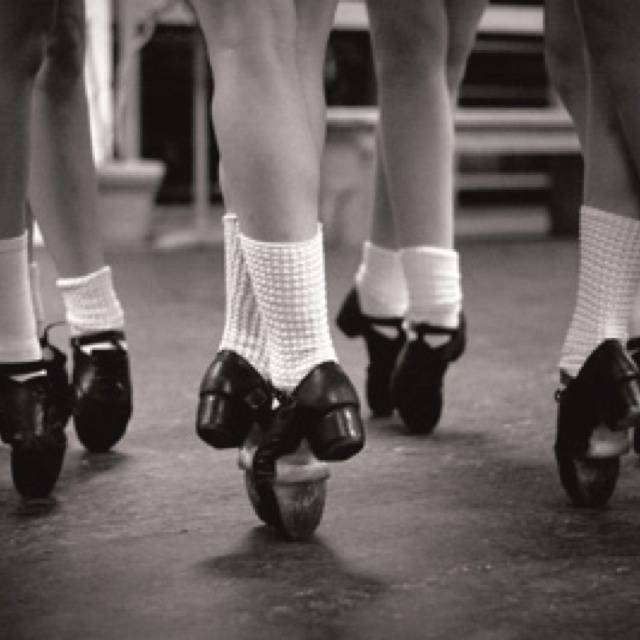 Your dance bag weighs like a hiking backpack.
Your dance bag weighs like a hiking backpack.
58. Your friends, who tried to put on hards, ask with surprise how you can even walk in this.
59 Your boyfriend brags to his friends that his girlfriend is into Irish dancing, not volleyball, swimming or football.
60. You dance at work and then wonder why your colleagues look at you so strangely.
61. You put on new gillis at night to break them in faster.
62. You use fashion medals as decorations for the Christmas tree (gee, that's a thought :))))
63. You are able to dance reel to almost any song on the radio.
64. Half of your training uniform is a t-shirt in fash.
65. Jogging around the hotel at midnight in a wig and tiara is quite normal for you (I hope that the participant of the run was also wearing a tracksuit, otherwise it would really look more than extravagant :)))
66. Before you buy shoes, you try to dance in them.
67. When you hear "kat" you immediately try to perform this movement.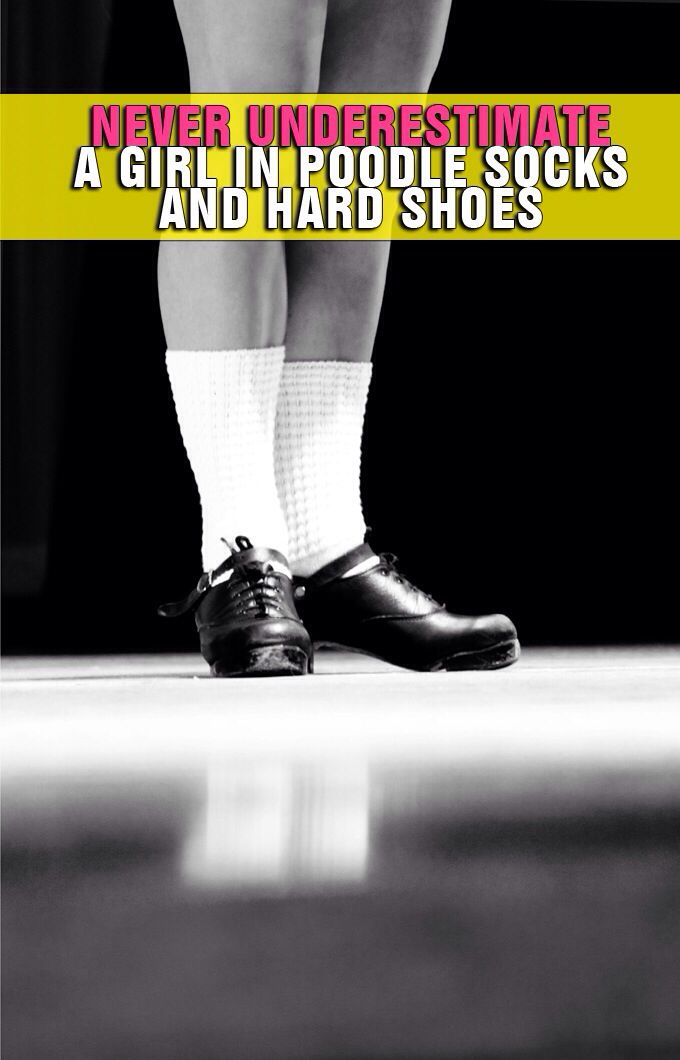
68. You are the only one who skips school on St. Patrick's Day.
69. You are the only one who voluntarily listens to accordion music and you like it.
70. You reach into your makeup bag for eyeliner and pull out three feet of green, white and orange tape.
71. Half of your socks are fashion socks and the other half are normal socks because you wear them under fashion socks.
72. People are very impressed by your simple reel step. (geeah, that's the way it is :)) - I watched the reaction of trekkers on Moskvofash)
73. Your non-iridancer friends are shocked to learn that what is on your head is not your hair, but a wig.
74. Your hips are blue and black bruised by switches, but you don't care.
75. You are trying to type on the keyboard, trying to tap out the rhythm of the trebble jig.
76. You know that buckles on shoes are not something from the last century.
77. You know that Irish dancing is not about jumping in circles and ready to beat someone who says it's very easy.

